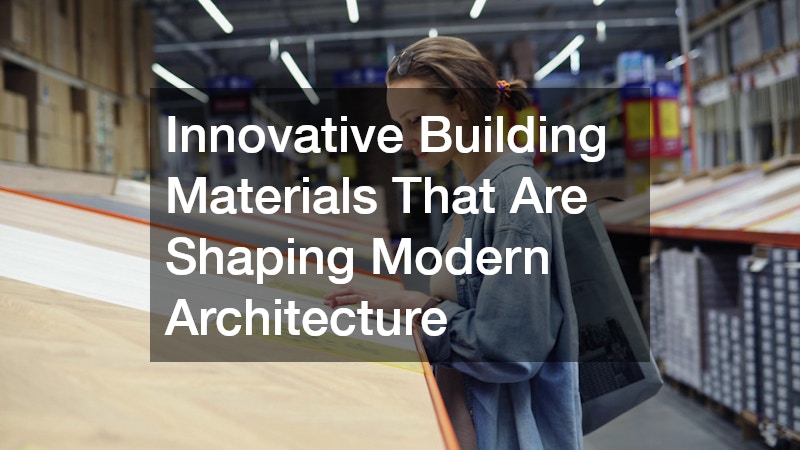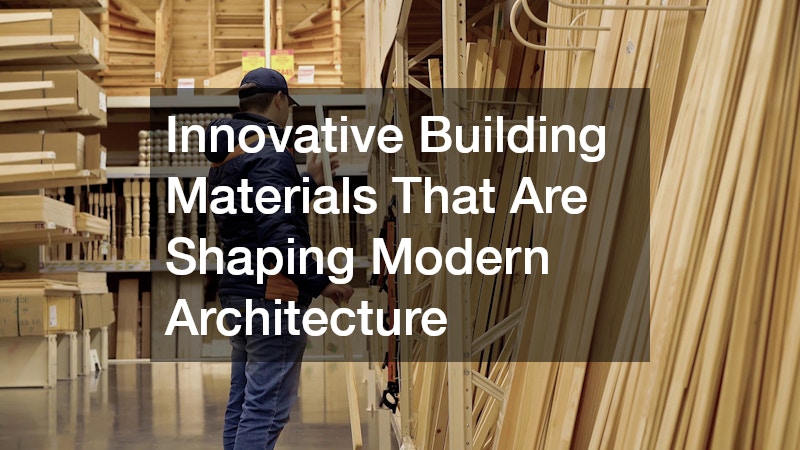Innovative building materials are critical to the evolution of modern architecture, offering architects and builders new possibilities and solutions. These materials are not only reshaping the aesthetics of our built environment but are also enhancing performance and sustainability.
As the world seeks to address climate change and resource scarcity, material innovation plays a pivotal role in reducing environmental impacts. Materials like self-healing concrete and cross-laminated timber (CLT) are at the forefront, driving both aesthetics and functionality in new ways.
This article will explore some of these groundbreaking materials that are transforming the architecture industry today, considering their benefits, challenges, and impacts on sustainability.
What Are the Most Popular Innovative Building Materials Today?
1. Self-Healing Concrete
Self-healing concrete is revolutionizing modern construction with its ability to repair cracks autonomously. This technology utilizes bacteria embedded in the concrete that produce limestone when exposed to water, thus filling in any cracks that form.
The use of self-healing concrete significantly reduces maintenance costs and extends the lifespan of structures. It is particularly beneficial in infrastructure projects where frequent maintenance would be otherwise disruptive and expensive.
The integration of self-healing concrete in modern architecture is not just a financial advantage but also contributes to sustainability. By minimizing the frequency of repairs and replacements, we decrease the demand for new materials, consequently lowering carbon emissions associated with production and transportation.
2. Cross-Laminated Timber (CLT)
Cross-laminated timber (CLT) is gaining traction in sustainable building due to its renewable nature and exceptional strength. CLT panels are made by gluing layers of wood together at right angles, creating a material with remarkable structural integrity.
One of the main advantages of CLT is its ability to sequester carbon while offering the same, if not better, strength as traditional building materials. This makes it an excellent choice for architects aiming to reduce the carbon footprint of their projects.
Additionally, CLT’s lightweight reduces the need for deep foundations, further decreasing the environmental impact. Its ability to be prefabricated enhances construction speed and precision, contributing to fewer disturbances and waste on the job site.
How Do These Materials Impact Sustainability in Architecture?
1. Reducing Carbon Footprint
Innovative building materials play a crucial role in lowering the carbon footprint of construction activities. Materials like CLT actively absorb carbon dioxide during their growth phase, offsetting emissions that would otherwise contribute to climate change.
Incorporating these materials can significantly reduce the energy needed for heating and cooling buildings due to their superior insulating properties. This efficiency results in decreased greenhouse gas emissions over the building’s lifetime.
Furthermore, by utilizing renewable resources like timber and advancing technologies such as self-healing concrete, the overall environmental impact of construction can be significantly mitigated. By doing so, the architecture sector moves closer to achieving net-zero emissions targets.
2. Enhancing Energy Efficiency
Advanced building materials greatly enhance the energy efficiency of structures, reducing their reliance on fossil fuels. For instance, innovative insulation materials can drastically cut heating and cooling energy requirements.
Materials that offer thermal mass, such as CLT, contribute to a more stable indoor temperature, reducing the need for artificial heating or cooling. This not only benefits the environment but also lowers utility costs for occupants.
Improved energy efficiency through innovative materials also helps meet stringent building codes and sustainability certifications. These materials allow architects and builders to satisfy modern energy codes while delivering comfortable and eco-friendly living spaces.
What Are the Challenges of Integrating New Materials into Modern Architecture?
1. Cost Considerations
While innovative materials offer numerous advantages, they often come with higher upfront costs. The production and development of these materials typically involve advanced technology and specialized skills, affecting their overall expense.
However, it’s important to consider the long-term savings associated with increased durability and lower maintenance needs. Over time, the initial investment in innovative materials can result in a more economical project lifecycle.
These cost considerations pose a challenge, particularly for developers with tight budgets. Yet, as these materials become more mainstream and production scales increase, costs are anticipated to decrease, making them more accessible to a broader range of projects.
2. Regulatory and Safety Concerns
New building materials often face rigorous regulatory scrutiny to ensure they meet safety and performance standards. This can slow down their adoption as compliance with building codes and approvals can be time-consuming and complex.
As innovations in building materials bring new properties and capabilities, they must be thoroughly tested to verify they meet all necessary requirements. This includes fire resistance, structural integrity, and environmental impact assessments.
Overcoming these regulatory challenges necessitates collaboration between manufacturers, architects, and policymakers to create standards that foster innovation while ensuring safety and reliability in construction practices.
The transformation of modern architecture through innovative materials is evident as these solutions provide both aesthetic and functional benefits while promoting sustainability. The use of self-healing concrete and cross-laminated timber exemplifies this shift, reducing environmental impacts and improving building performance.
The integration of these materials into mainstream construction requires overcoming cost and regulatory challenges, yet their long-term benefits are undeniable. Architects and builders are paving the way for a more sustainable future by embracing these innovations.
Looking forward, continuous research and development in this field will open new possibilities, driving the creation of buildings that are not only visually stunning but also technologically advanced and environmentally responsible.


